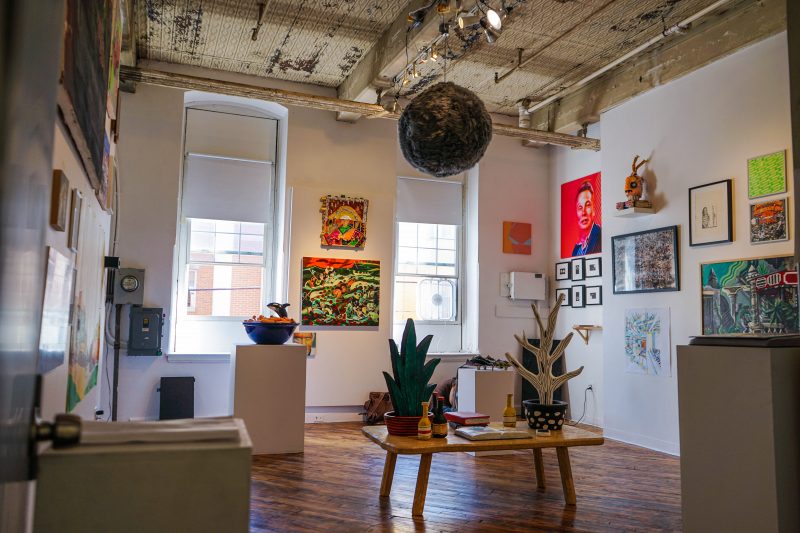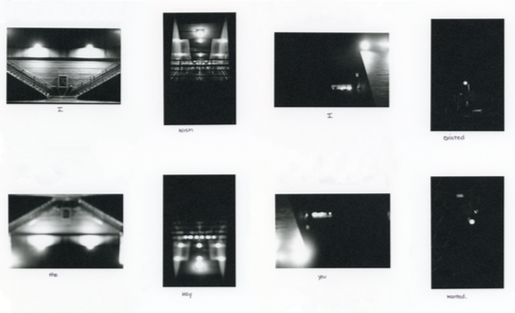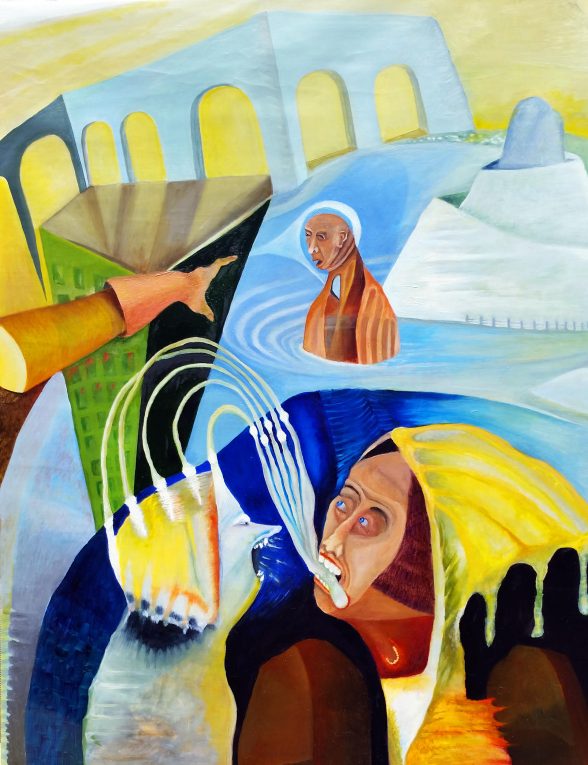July is juried show season in Philadelphia. While Vox Populi, Woodmere Art Museum, the Manayunk Roxborough Art Center, and others stage their own annual juried roundups, Practice Gallery, one of the more experimental artist collectives in the 319 N. 11th St. building, presents what the exclusive shows missed with their “Best of the Worst” exhibit.
Salon de Refuses

Both an artist opportunity and a canny homage to the original 1863 Salon de Refusés, “Best of the Worst” is a much more sly challenge to its neighboring galleries than it purports to be. Like the 1863 Salon, Practice is suggesting that the works on its walls — over 40 pieces — are perhaps better, and more avant-garde, than what’s on the walls at the juried shows; with a wink and a nudge, Practice stakes its claim for posterity through association.
Of course, in order to back up that assertion, the works in “Best of the Worst” need to push the envelope in some way—to shock, confuse, even disgust us. But on its face, there isn’t much in “Best of the Worst” that distinguishes itself from other juried shows. There’s certainly talent on display in a wide variety of media–sculpture, painting, photography, installation, even video. But as an overall experience, “Best of the Worst” is marked by a sense of disjointedness. Because the central theme is a “best of” show, with no single aesthetic, and the works don’t relate to one another thematically. Instead, the pleasures in “Best of the Worst” are often found in singular contributions as discrete units.
Some stand-out pieces in a crowded show

Sarah Goffney’s set of eight photos, titled I Wish I Existed the Way You Wanted, stands out, even in the jammed salon hanging. Goffney’s small subtle black-and-white nocturnal photographs of industrial settings range from crisp and readable to increasingly indistinct and blurred as you look from right to left. Below each image is a single word from the title of the set, so, as your gaze tracks along the photographs, the compositions seem to dissolve into themselves. Goffney’s combination of picture and text could describe difficulties as they arise in a relationship—as if the more you want to make yourself understood, the harder it is to remain clear and defined about who you are.
On the level of pure craftsmanship, smaller individual works do delight. Marybeth Chew’s painting Invasion: UFO, hung beneath a larger painting on the back wall, is based on a still from the eponymous 1980 film and depicts in close-up a slack-jawed, smeary face, eyes vacant and dazed, flooded with unnatural hazy color, which conveys a sense of dread and awe in the face of the extra-terrestrial. Kelly Gillin-Schwartz’s meticulous drawing Jess, which depicts a female figure in both frontal and three-quarter view, is nearly lost amid more loud and punchy works, but stands out due to its intimacy and obvious affection for the subject.
Art that quotes from some of art history’s finest

Other notable contributions carefully and cleverly cite artistic precedent (a tired fad in the art world for some years, which may explain why they’ve been rejected). Marcella Marsella’s collage C-Bomb at first resembles mass-produced collages of Banksy’s street art, but is at second glance much more sophisticated in its approach to composition and color, using the bright red-and-yellow of French fries against more muted colors to symbolize a nuclear explosion. Robert Zurer’s Mental Implants, hung high and in a corner, draws upon the unsettling surrealist imagery of Giorgio de Chirico and the incipient horror of Francis Bacon in a way that seems totally new. Krista Dedrick Lai’s Refugee Crisis 2018, after Max Beckmann adapts Beckmann’s Sinking of the Titanic to the contemporary moment, adding the ubiquitous jingoistic red baseball caps to the choppy blue-green waters and struggling human figures. The less-than-subtle connection of one disaster with another is overly broad in its outright condemnation of human-made folly. We’re all on the sinking ship now.
Some overtly political works fare less impressively or are the equivalent of jokes that provoke a “hm” reaction rather than genuine laughter. An altered portrait of Elon Musk with face tattoos, Mollie Komins’ Space Je$us, doesn’t really say anything particularly provocative about the eccentrically wealthy owner of Tesla; likewise, Catherine Donohue’s 3D cross made from cigarettes would be right at home as a graphic on Bill Maher’s show, but doesn’t dig deeper into either religion or addiction.
Rejection and its effect on artists
Since rejection is an integral part of the works in “Best of the Worst,” the actual email rejections received by the artists ought to have been treated as part of the individual pieces, instead of placed in a binder for review—even if the front and center placement might upstage the works themselves and turn the show into a highfalutin, performance-art type of display. It’s the initial works on their own that were rejected, but these rejections justify their inclusion in Practice’s show. “Best of the Worst” doesn’t seem to be interested in interrogating how the art world hustle–the endless application fees, the rejections, the polite form emails–actually affects and changes the nature of the works works artists produce, which is a shame: Practice might have put on a more thought-provoking exhibition.
Best of the Worst, on view at Practice Gallery, 319 N. 11th St., 2nd floor, until end of day, July 29, 2018.





